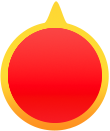Who need reading glasses?
Reading glasses are typically prescribed to individuals who experience presbyopia, a common age-related vision condition. Presbyopia affects the ability of the eyes to focus on close objects, making it difficult to read or see nearby items clearly. It typically becomes noticeable around the age of 40 and gradually worsens over time.
If you're experiencing any of the following symptoms, it may indicate a need for reading glasses:
Blurred vision when reading or performing close-up tasks.
Eyestrain or fatigue after reading for a short period.
Headaches or discomfort during or after reading.
Holding reading material at arm's length to see it clearly.
Difficulty reading small print or fine details.
Needing more light to read comfortably.

However, it's important to note that individual vision needs can vary. If you suspect you might need reading glasses or are experiencing any vision problems, it is recommended to consult with an eye care professional such as an optometrist or ophthalmologist. They can assess your vision and prescribe the appropriate corrective eyewear if necessary.
How to choose the right reading glasses?
Choosing the right reading glasses involves considering a few factors to ensure optimal comfort and vision correction. Here are some steps to guide you:
Get an eye examination: Schedule an eye exam with an optometrist or ophthalmologist to determine your exact prescription. This will help you identify the appropriate power of lenses you need for reading.
Understand your prescription: Your prescription will include details about the lens power (+/- diopters), any astigmatism correction, and potentially other specifications like pupillary distance (PD). Knowing these values will make it easier to select suitable reading glasses.
Determine the appropriate lens power: If you only require glasses for close-up tasks like reading, you can typically find reading glasses with lens powers ranging from +1.00 to +4.00 diopters, increasing in increments of 0.25. Try different powers to find the one that allows you to read comfortably without straining your eyes.
Consider frame styles and shapes: Look for frames that suit your face shape and personal style. Consider options like full-frame, half-frame, or rimless frames. Trying different styles and sizes can help you find a comfortable fit.

Pay attention to frame size: Ensure that the frame width is wide enough to accommodate your face comfortably, and that the temple arms are long enough to rest properly on your ears.
Check the lens quality: Inspect the lenses for any distortions, scratches, or imperfections that could affect your vision. High-quality lenses from Glassesshop should provide clear and undistorted vision.
Test the fit: Put on the glasses and check if they rest comfortably on your nose without sliding down. The lenses should align with your eyes' center, and the temples should fit snugly behind your ears without causing discomfort or pressure.
Consider additional features: Some reading glasses come with additional features like anti-reflective coatings, blue light filters, or adjustable nose pads. Depending on your needs, these extras may enhance your reading experience.
Remember, if you have any concerns or difficulties in selecting the right reading glasses, consult with an eye care professional who can guide you based on your specific needs and prescription.

